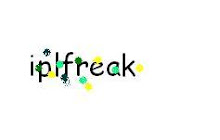Computer - A machine used to perform all types of calculation, manipulation which takes input and gives output.
Father of Computer - Charles Babbage
Generations of Computer
First Generation (1951 - 1958)
1951, computers used Valve/Vacuum tubes.
1957, magnetic tapes were used which were similar to audio tape or video tape.
Transistors were also developed at later stage in the same generation.
A prime example is the Universal Automatic Computer or UNIVAC was introduced.
Second Generation (1959 - 1964)
1959, improvisation of transistors (electronic switching device) began.
Assembly language and High Level Language such as FORTRAN & COBOL were developed.
1962, First removable disc was developed for public use.
Third Generation (1965 - 1970)
New technology reduced the size of a computer by replacing circuit boards of transistors with chips as small as 1/8th of an inch.
Silicon chips were a huge breakthrough in the computer world due to their small size, reliability and low cost.
Airline Reservation systems were implemented during this period.
Fourth Generation (1971 - present)
Major technology advancement took place and the tiny microprocessor was made available. Currently the fastest is 3.2 GHz.
Fifth Generation or Recent Generation
From thereon no stopping the development has advanced with laptops, DVD, USB Storage devices, Palmtop and the list goes on.
Computers Range from Micros to Supercomputers
Micro Computers
Mini Computers
Mainframes
Supercomputers
Classification of computers
Two types of classification Software and Hardware
Software - Logical set of instructions given to computer to perform a task.
Examples - MS-Office, C, C++, Java, Visual Basic etc,.
Hardware - Any physical component of a computer.
Examples – Motherboard, Printer, Mouse etc,.
Memory
Smallest unit of memory is Bit.
8 bits 1 byte
1,024 bytes 1 kilo byte
1024 kilo bytes 1 mega byte
1024 mega bytes 1 giga byte
1024 giga bytes 1 tera byte
Primary or Volatile Memory
Examples - RAM and ROM
Secondary or Non-Volatile Memory
Examples - PROM, EPROM, EEPROM
POST - Power On Self Test
Booting - Loading of operating system into primary memory (RAM)
Cold Booting - Starting the computer from the powered off state.
Warm Booting - Restarting the computer from Operating system.
Subscribe to:
Post Comments (Atom)

No comments:
Post a Comment